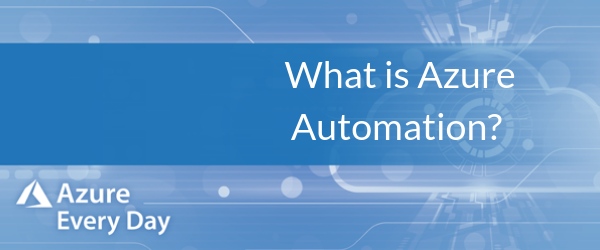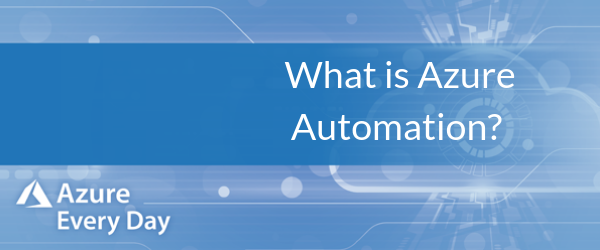What is Azure Automation?


So, what do you know about Azure Automation? In this post, I’ll fill you in on this cool, cloud-based automation service that provides you the ability to configure process automation, update management and system configuration, which is managed across your on-premises resources, as well as your Azure cloud-based resources.
Azure Automation provides complete control of deployment operation and decommissions of workloads and resources for your hybrid environment. So, we can have a single pane of glass for managing all our resources through automation.
Some features I’d like to point out are:
- It allows you to automate those mundane, error-prone activities that you perform as part of your system configuration and maintenance.
- You can create Notebooks in PowerShell or Python that help you reduce the chance for misconfiguration errors. And it will help lower operational costs for the maintenance of those systems, as you can script it out to do it when you need instead of manually.
- The Notebooks can be developed for on-premises or Azure resources and they use Web Hooks that allow you to trigger automation from things such as ITSM, Dev Ops and monitoring systems. So, you can run these remotely and trigger them from wherever you need to.
- On configuration management side, you can build these desired state configurations for your enterprise environment. This will help you to set a baseline for how your systems will operate and will identify when there’s a variance from the initial system configuration, alerting you of any anomalies that could be problematic.
- It has a rich reporting back end and alerting interface for full visibility into what’s happening in your Windows and Linux systems – on-premises and in Azure.
- Gives you update management aspects (in Windows and Linux) to help you define the aspects of how updates are applied, and it helps administrators to specify which updates will be deployed, as well as successful or unsuccessful deployments and the ability to specify which updates should not be deployed to systems, all done through PowerShell or Python scripts.
- It can share capabilities, so when you’re using multiple resources or building those Notebooks for automation, it allows you to share the resources to simplify management. You can build multiple scripts but use the same resources over and over as references for things like role-based access control, variables, credentials, certificates, connections, schedules and access to source control and PowerShell modules. You can check these in and out of source control like any kind of code-based project.
- Lastly, and one of the coolest features in my opinion, where these are templates you’re deploying out in your systems, everyone has some similar challenges. There’s a community gallery where you can go and download templates others have created or upload ones you’ve created to share. With a few basic configuration tweaks and review to make sure they’re secure, this is a great option for making the process faster by finding an existing script and cleaning it up and deploying it in your systems and environment.
So, there’s a lot you can do with this service and I think it’s worth checking out as it can make your maintenance and management much simpler.
If you have questions about Azure Automation or Azure in general, we love helping people out and working through this stuff. Click the link below or contact us—where ever you are on your Azure journey, we’re here to help.
Sign-up now and get instant access

ABOUT THE AUTHOR
Free Community Plan
On-demand learning
Most Recent
private training



.jpg?width=406&name=Eans%20YouTube%20Thumbnails%20(2).jpg)


-1.png)
Leave a comment